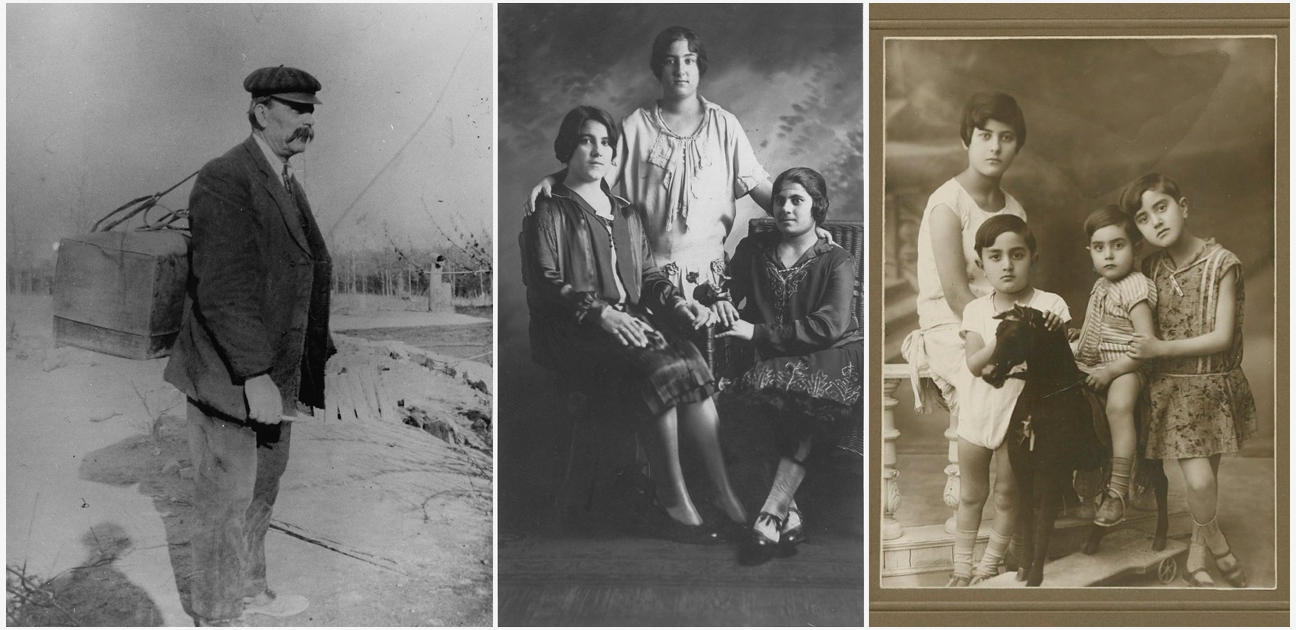1-4
Photographs from the Faris and Yamna Naff Arab-American Collection Archives Center, National Museum of American History, Smithsonian Institution.
Arab American literature and how we define it remains central to the field’s discourse. Some scholars believe prior knowledge of Arab culture is essential to comprehending Arab American literature since it is an ethnic genre. Since the 20th century until the present, Arab Americans have strongly lobbied to classify Arab American studies as an ethnic field and draw a line between Middle East studies — which belongs to the area studies — and ethnic studies. Although we have addressed this topic over the years, we at Al Jadid believe it’s time to take a fresh look at it as we approach the first quarter of the 21st century.
Certain paradigms have dominated research and discussions on Arab Americans. Gary C. David examined the nuances afflicting the field in his essay “Rethinking Who is an Arab American: Arab American Studies in the New Millennium” (Al Jadid, Vol. 9, No. 44, Summer 2003). The first paradigm conflates Arab American studies as an outgrowth of Arab or Middle Eastern studies, suggesting that scholars with expertise in the latter are likewise experts on the former. In the words of David, Arab Americans and their experience become derivative of Arabs and Arab life “back home.” This assumption feeds into what he terms the “assimilationist paradigm”: the view that since “Arab culture is the baseline against which Arab Americans are measured, any “deviation” from “Arab culture” is evidence of a loss of Arabity (Arab authenticity) or community membership (i.e., legitimacy).”
This article is the introduction to a four-part series of articles about Arab American literature, covering the first wave (the Mahjar period), second wave, and third wave, which covers the contemporary period.
To read Gary C. David’s essay “Rethinking Who is an Arab American: Arab American Studies in the New Millennium,” click on the link below:
(Photographs from left to right: Syrian pack peddler from Birmingham, Alabama: black & white photoprint, circa 1890. Faris and Yamna Naff Arab-American Collection Archives Center, National Museum of American History, Smithsonian Institution. Three Lebanese female cousins: black & white photoprint, circa 1925. Faris and Yamna Naff Arab-American Collection Archives Center, National Museum of American History, Smithsonian Institution, Series 12, Box 1, Folder Arab American Media Society. Selma (sister of Faris Ghanlous), Alexa, Michael, Deanna Ghanlous (Faris's children): black & white photoprint, December 31, 1928. Faris and Yamna Naff Arab-American Collection Archives Center, National Museum of American History, Smithsonian Institution, Series 12, Box 3, Folder Naff family. Peddlers George and Daher on steps in front of house, 1920s. Faris and Yamna Naff Arab American Collection, Archives Center, National Museum of American History, Smithsonian Institution, Series 2, Box 72.)
Excerpted from Elie Chalala's "A Fresh Look at the Debate: Definitions and Historiography of Arab Americans in the New Century," which appeared in Al Jadid Magazine, Vol. 27, No. 84, 2023 and Inside Al Jadid Reports, No. 54, 2023.
Copyright © 2023 AL JADID MAGAZINE

